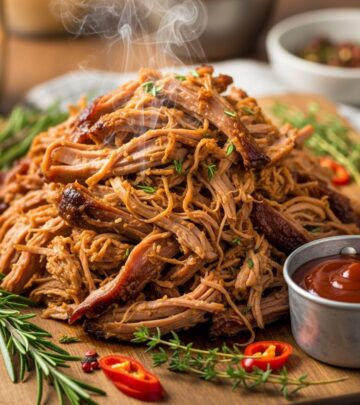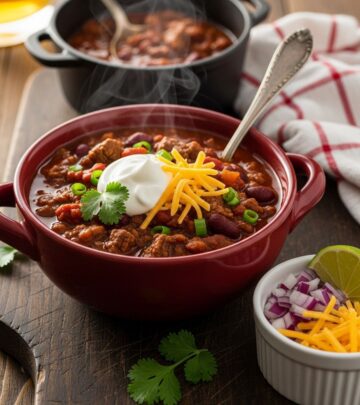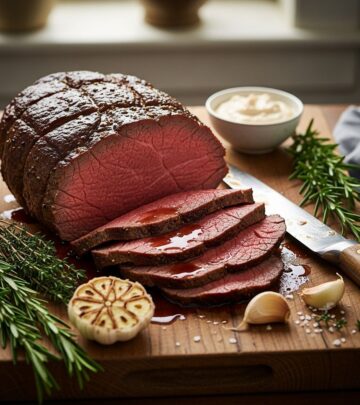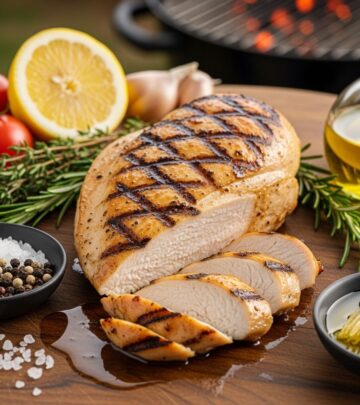Whole Grain Baking’s Micro-Brewery Honey-Wheat Bread: Flavorful, Nutritious, and Versatile
Whole grains, subtle sweetness, and beer notes yield a moist, tasty artisan bake.

Whole Grain Baking’s Micro-Brewery Honey-Wheat Bread
Whole grain bread is more than a staple—it’s a celebration of flavor, nutrition, and craftsmanship. The micro-brewery honey-wheat recipe brings together earthy whole wheat, fragrant honey, and a touch of oats and beer for a complex, soft loaf that appeals to both enthusiasts and those new to whole grains. With the right approach, you can transform basic ingredients into a delicious bread that is hearty, versatile, and nourishing.
Why Choose Whole Grain Honey-Wheat Bread?
- Enhanced Nutrition: Whole grains supply fiber, antioxidants, and minerals that refined flour lacks.
- Balanced Sweetness: Honey and a splash of orange juice subtly counter any bitter undertones, making this loaf inviting.
- Soft Texture with Flavor Depth: The addition of oats and beer, along with proper mixing and shaping, creates a sandwich-quality crumb with character.
Key Ingredients and Their Roles
Understanding ingredient selection is central to successful whole grain baking. Each element in the micro-brewery honey-wheat recipe offers unique effects:
- Whole Wheat Flour: Packed with bran and germ, it builds structure and earthiness.
- Unbleached All-Purpose Flour: Balances whole grain’s density, improving rise and tenderness.
- Old-Fashioned Rolled Oats: Contributes to texture, moisture retention, and a gentle nutty flavor.
- Honey: Adds natural sweetness, assists browning, and helps keep bread moist.
- Orange Juice: Brightens flavor and softens whole wheat’s bitter edge with acidity.
- Beer: Micro-brewery flair; a mild, light-bodied beer enriches yeast activity and flavor complexity, though hearty beers may impart bitterness.
- Butter: Yields tenderness, flavor, and a softer crust, especially when brushed post-bake.
- Salt: Essential for taste and gluten regulation.
- Yeast: Powers the rise, developing the bread’s crumb and height.
| Ingredient | Purpose | Amount (Standard Loaf) |
|---|---|---|
| Whole Wheat Flour | Base, structure | 1 3/4 cups |
| All-Purpose Flour | Lightness | 1 cup |
| Rolled Oats | Moisture, texture | 1/2 cup |
| Honey | Sweetness | 3 tbsp |
| Orange Juice | Acidity, flavor | 1/4 cup |
| Beer | Flavor/yeast action | 1/2 cup (optional) |
| Butter | Tenderness | 4 tbsp |
| Salt | Flavor/gluten | 1 1/4 tsp |
| Yeast (instant) | Rising | 1 1/4 tsp |
Step-by-Step Baking Instructions
- Prepare Ingredients: Gather all ingredients, ensuring butter is softened and beer (if used) is at room temperature.
- Mix and Knead: Combine ingredients (either by hand, stand mixer, or bread machine) into a soft, smooth dough. Knead until elastic and well blended, about 7–10 minutes. This develops the gluten framework needed for structure.
- First Rise: Place dough in a greased bowl, cover, and allow to rise until puffy and nearly doubled (1 to 2 hours), depending on ambient temperature.
- Shape for Pan: Gently deflate the dough and shape into a log fitting a standard loaf pan (8 1/4 x 4 1/4 inches works well).
- Second Rise: Place shaped dough in pan, cover lightly with greased plastic wrap or a proof cover, and let rise until crowned about 1 1/2 inches above the pan rim (1 1/2 to 2 1/2 hours).
- Preheat Oven: As the second rise concludes, preheat oven to 350°F (175°C).
- Bake: Uncover and bake for 30–35 minutes, tenting loaf with foil after 15 minutes to prevent over-browning. The bread is finished when deep golden and registers 190°F (88°C) internally.
- Cool and Finish: Transfer bread to a cooling rack promptly. Brush crust with melted butter for softness. Cool for at least 30 minutes before slicing or serving.
Visual and Sensory Cues
- Bread should rise well over the pan, forming a rounded top.
- Crust coloration: warm golden-brown.
- Crumb: soft, slightly moist, and tender, not dense or gummy.
Micro-Brewery Flair: Incorporating Beer in Bread
Beer adds subtle malt flavors and nurtures yeast development. For this loaf, mild, pale beers are preferred—they complement wheat’s taste and avoid imparting bitterness. Dark or robust micro-brewery beers may overwhelm the bread’s delicacy.
- Use up leftover beer creatively (in soups, stews, or as a baker’s treat).
- For non-drinkers, beer is optional and can be readily substituted with additional water for similar texture.
Tips for Whole Grain Bread Success
- Hydration Matters: Whole wheat and oats absorb more water than white flour; check dough texture and adjust liquid as needed to avoid dryness.
- Patience in Proofing: Whole grain breads may take slightly longer to rise due to bran interfering with gluten; allow ample time for full height.
- Mixing Techniques: A thorough initial mix is crucial to prevent dense loaves. Ensure all flour is incorporated and knead adequately.
- Cool Thoroughly: Slicing a warm loaf can squash crumb and release excess moisture, potentially making slices gummy.
- Butter Finish: Brushing with melted butter post-bake not only softens crust but adds a subtle shine and flavor.
Nutrition and Health Benefits
- Fiber Rich: Whole wheat and oats together support digestive health and prolonged satiety.
- Lower Glycemic Response: Whole grain bread is absorbed more slowly than white bread, supporting steady energy.
- Mineral Content: Provides magnesium, zinc, iron, and B-vitamins essential for various bodily functions.
- Heart Health: Swapping refined bread for whole grain options is linked to lower risk of cardiovascular disease.
- Honey: Natural sweetener that contains antioxidants and minor nutrients compared to refined sugars.
Serving Suggestions
- Classic Sandwiches: Ideal for lunch, light enough for deli meats, strong enough for heartier fillings.
- Toast: Try with butter, nut butters, or fruit preserves for breakfast or snacking.
- Pairing with Cheese and Soups: A base for gourmet grilled cheese or to accompany a robust soup.
- French Toast or Bread Pudding: Leftover slices can be repurposed for creative breakfasts or desserts.
Frequently Asked Questions (FAQs)
Q: Can I use just whole wheat flour for this recipe?
A: You can, but blending with all-purpose flour improves rise and tenderness, especially for beginners. Solely whole wheat flour may yield denser results.
Q: What type of beer works best?
A: Use mild, light-bodied beers. Avoid overly hoppy or dark beers, as these may impart bitterness to your loaf.
Q: Is honey required, or can I substitute?
A: Honey brings moisture, sweetness, and browning. Maple syrup or agave are suitable substitutes, but refined sugar may dry the loaf.
Q: How do I know when my bread is done?
A: Internal temperature should reach 190°F. Visual cues include a uniform golden color and a hollow sound when tapped.
Q: Can I make the recipe vegan?
A: Use plant-based butter and swap honey with maple syrup or agave. Check that your beer is vegan, as some are clarified with animal products.
Q: Common pitfalls and fixes?
- Dense loaf: Not enough kneading or rising time. Ensure dough is well mixed and fully proofed.
- Dry bread: Add slightly more liquid if dough looks stiff; cover bread during cooling.
- Bitter taste: Use fresh whole wheat flour; add orange juice to counter bitterness.
Baker’s Notes: Variations and Storage
- Seeded Version: Add pumpkin, flax, or sunflower seeds for extra crunch and nutritional boost.
- Fruit Add-Ins: Dried cranberries or raisins pair exceptionally with honey-wheat flavors.
- Storing: Cool completely, store in airtight container up to 3 days at room temperature, or freeze slices for longer shelf life (up to 1 month).
- Reheating: Toast lightly to refresh flavors and bring out the honey aroma.
Expert Tips for Results Like a Bakery
- Weigh Ingredients: Precision ensures consistency; a kitchen scale helps replicate success.
- Monitor Temperature: For yeast activation, keep liquids lukewarm, not hot.
- Use Steam: Place a pan of water in the oven during the first part of baking for a softer crust.
- Resting Dough Overnight: For deeper flavor, allow dough a slow rise in the fridge overnight before baking.
Troubleshooting Micro-Brewery Honey-Wheat Bread
| Problem | Likely Cause | Solution |
|---|---|---|
| Bread does not rise | Inactive yeast or cold environment | Check yeast freshness and move dough to a warmer area |
| Bread is too bitter | Using dark beer or old flour | Switch to light beer; use fresh flour; add orange juice |
| Crust too hard | No butter brush or dry dough | Brush crust post-bake; adjust hydration |
| Dough tears during shaping | Low hydration or under-kneading | Increase liquid and knead more |
Conclusion: Celebrate Wholesome Bread
Baking whole grain honey-wheat bread is both a creative and nurturing pursuit. By harnessing micro-brewery techniques, balancing flavors, and prioritizing nutrition, bakers of any skill can produce loaves that rival artisan offerings. Experiment with add-ins, pay attention to dough cues, and share slices with family and friends—embrace the warmth and satisfaction that only home-baked bread can deliver.
Quick-Reference Recipe Card
- Prep time: 20 minutes
- First rise: 1–2 hours
- Second rise: 1.5–2.5 hours
- Bake time: 30–35 minutes
- Cooling: 30 minutes before slicing
Share Your Success and Enjoy!
Let baking be an adventure. Experiment with beer types, sprinkle in seeds or fruit, and don’t forget the finishing touch—a swipe of melted butter and a moment to savor the aroma. Whole grain baking is not just about the finished loaf, but the process and the connections nourished along the way.
References
Read full bio of Sneha Tete












